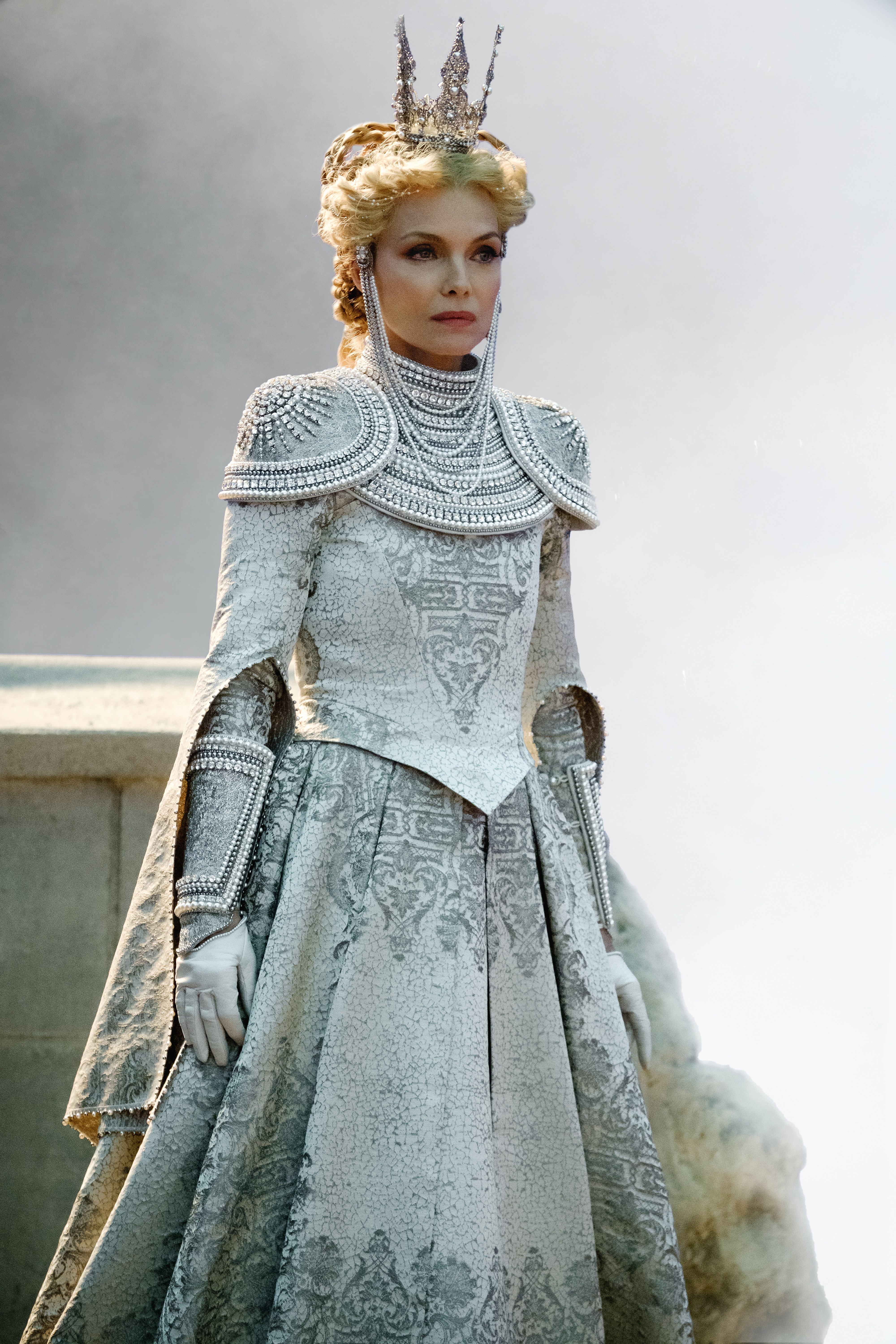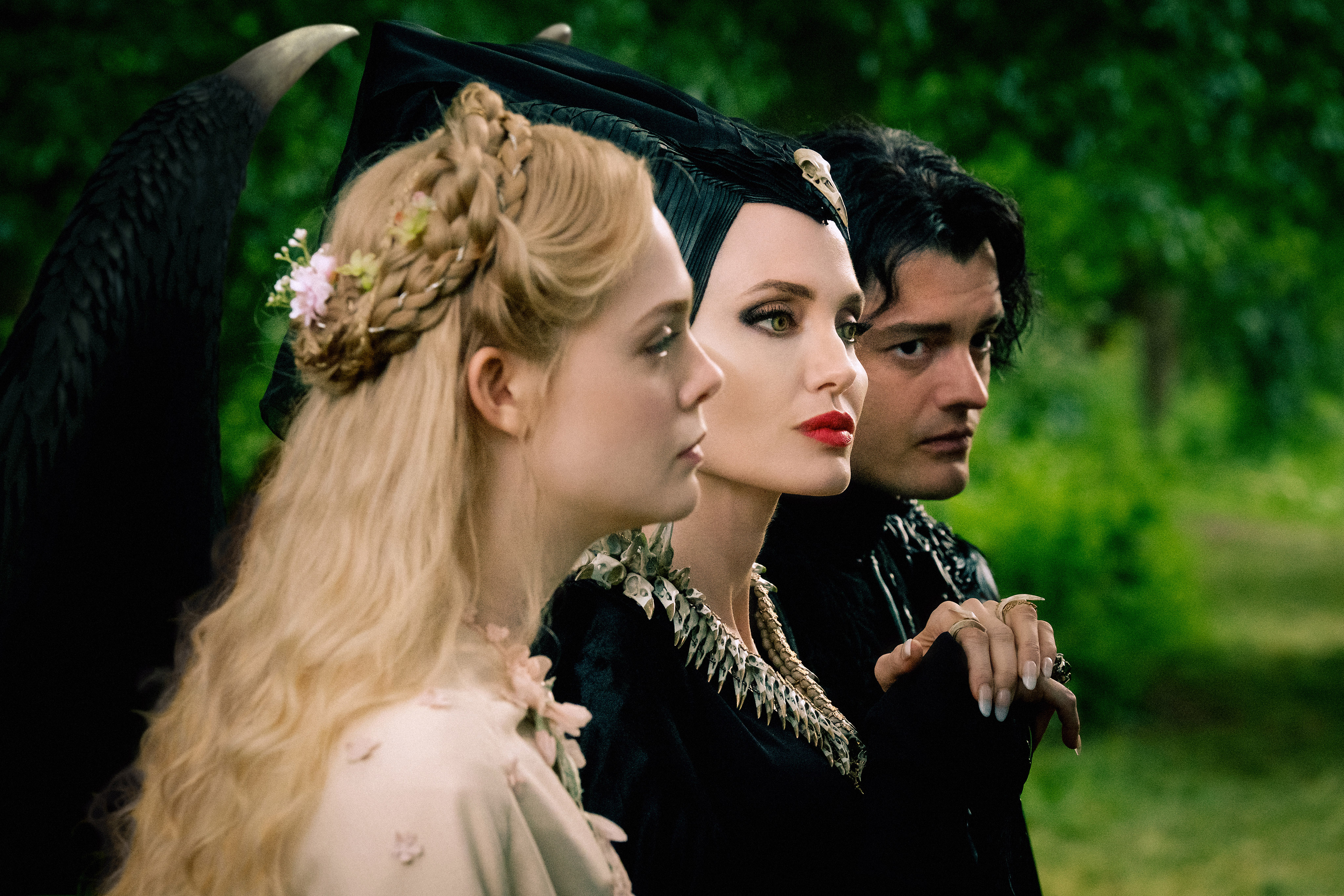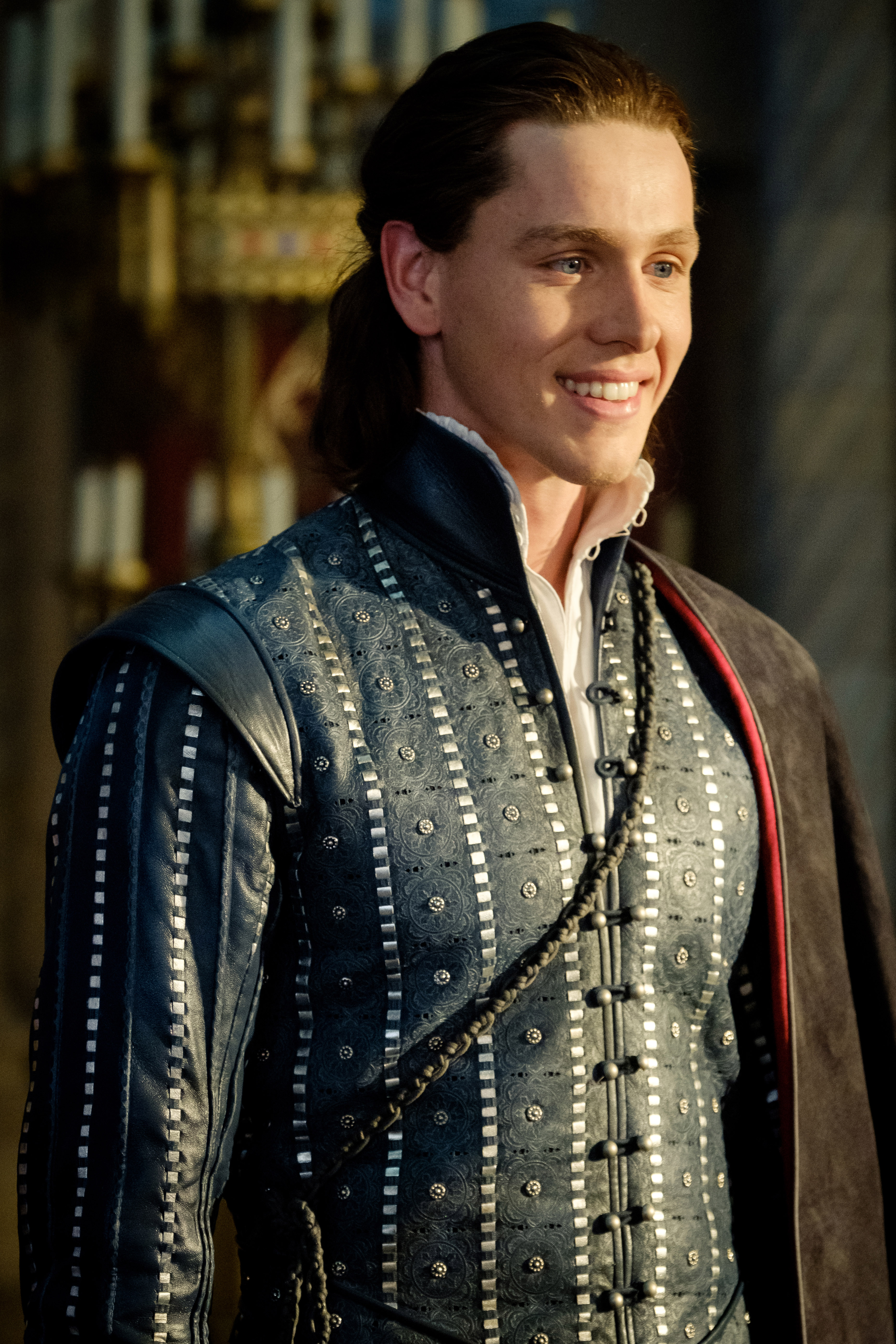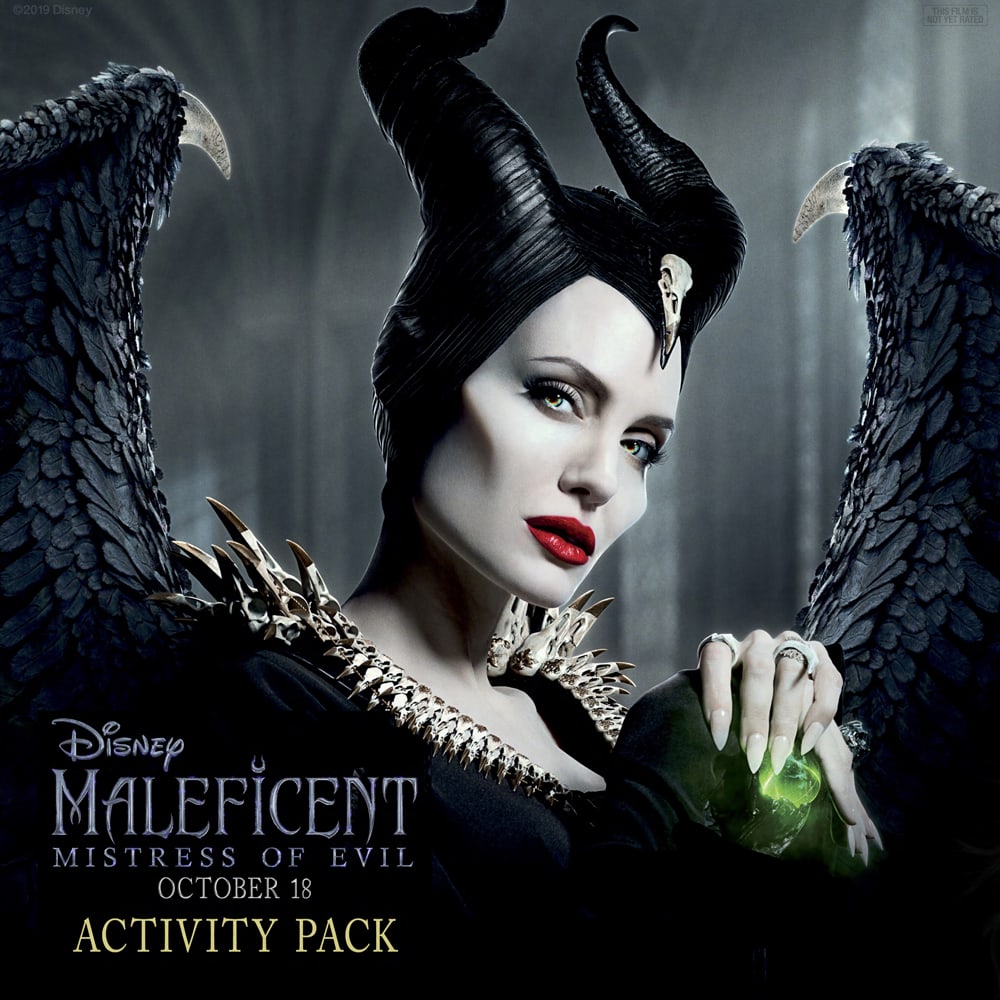This post may contain affiliate links. The Review Wire may collect a share of sales if you decide to shop from them. Please see my full disclosure policy for details.
The Story Continues
Michelle Pfeiffer and Angelina Jolie talk about Maleficent and how their role intertwine.

The years have been kind to Maleficent and Aurora. Their relationship, born of heartbreak, revenge, and ultimately love, has flourished. While the dark fairy’s thirst for vengeance was the reason behind the original curse placed on the infant princess, it was also her love that broke it. She has raised Aurora as her own and bestowed her goddaughter with the title Queen of the Moors. Aurora’s love for her godmother, in return, is unconditional.
While close, they are both strong-willed and often butt heads, and together they are slightly dysfunctional. “Maleficent started out very girlish, very soft and very trusting,” explains Jolie. “Then she was harmed and became hardened. Eventually, she grows to love Aurora and to be soft again in that wonderful, warm way that a nurturing woman is, and she realized that wasn’t a weakness but was actually a strength.”

Aurora has a pure heart and, having grown up with the magical creatures of the Moors, is a free spirit. “Aurora embodies kindness and compassion, and her biggest strength is her good heart and wanting to do good, which is such a beautiful quality,” says Elle Fanning. “They may be messed up in many, many ways, but they have a very honest relationship,” Jolie says.
In this story, Aurora and Maleficent spend a fair amount of time apart, giving them a chance to discover who they are without each other, where they are meant to be and what it’s like to live without each other. “It’s almost like the original story, where we go back to our own corners,” says Jolie. “We go back to she’s the beautiful, good princess, and I’m the outcast that is evil and hunted.”
Joining them in their progressive family is Maleficent’s faithful companion, the raven Diaval, played once again by Sam Riley. Diaval and Maleficent spent 16 years together watching Aurora grow up, and he has developed a fondness for Maleficent. He now serves as her eyes and ears in the human world, and, despite all the abuse he is subjected to, is incredibly tolerant and fiercely loyal. “They bicker with one another all the time,” says Riley, “but there are important messages in the story about tolerance, acceptance, openness, and friendship between races or species that are communicated through their relationship.”
The pixies who cared for Aurora for those 16 years continue to reside in the Moors and are as meddlesome as ever. Imelda Staunton is Knotgrass. Her fellow pixies are Thistlewit, played by Juno Temple and Flittle, played by Lesley Manville.

Aurora is still in love with Prince Philip, played by Harris Dickinson, from the neighboring kingdom of Ulstead, and has agreed to marry him. This is a cause for much celebration, as the wedding serves to unite the human and fairy worlds. While Philip’s parents are thrilled with the news of their son’s engagement, Maleficent is hesitant to embrace the union, knowing all too well the pain that love can bring.
King John, played by Robert Lindsay, is married to Queen Ingrith, a cunning, conniving and selfish woman, and a worthy adversary to Maleficent. Seemingly good on the surface, she has a rotten core underneath her cultivated and poised exterior. When it came to casting the role, the filmmakers needed an actor who could hold her own opposite Angelina Jolie. Michelle Pfeiffer was that actor.

When Queen Ingrith invites Maleficent to an intimate dinner at Castle Ulstead, Aurora gives her godmother a scarf to cover her horns, something she believes is innocuous at the time, but in truth is quite hurtful. “That is her first mistake: trying to change someone into what they’re not and molding them into the person she thinks she needs to be,” says Fanning. “Then she doesn’t believe her at the dinner, which is the ultimate betrayal. That betrayal is something that weighs heavily on Aurora.” Queen Ingrith has orchestrated the dinner to cast Maleficent in a negative light and drive Aurora from her godmother and into the arms of her new mother-in-law. “It’s always fun playing a villain,” Pfeiffer says. “The challenge is finding the humanity in a character like Queen Ingrith, because there is always the option of just playing it all one color and just being pure evil, but my favorite villains always have a humanity about them so that you kind of feel sorry for them while hanging them at the same time.”

Pfeiffer continues, “Queen Ingrith is damaged and has been betrayed by a lot of the men in her life, but she’s got her eye on the goal, and nothing will get in the way of that… nothing.”
Jolie is glad Pfeiffer didn’t try to make the character too redeeming. “She went dark, and she went for it with no apologies,” laughs Jolie. “Michelle is a very good person and a wonderful mother. Because she is the opposite of the queen and actually values who she is and how she holds herself, she is able to commit to playing the villainy with gusto… and it comes across with nice icy elegance.”
Following the disastrous dinner, which ends with King John in a deep sleep and Maleficent recovering from an iron bullet wound, the winged fairy is rescued by a mysterious figure. Conall brings her to a cavernous nest where she learns of the existence of the dark fey, a band of winged creatures with horns similar to Maleficent, who were driven from their kingdoms by humans years ago.
Having always believed she was the only one of her kind, it comes as a complete shock to Maleficent. While she does find the sense of community and pride they share appealing, there is animosity and dissension among the five tribes. The dark fey is connected to nature and the environment, and they are determined to protect it the best that they can.
They are eco-warriors who have a more radical sense of being and of being kind to the land but are at war with the human race. Some, like Conall, prefer pacification over fighting. “Conall is a wise warrior who has led the fey into battle with humans before, but has now come to a point where he’s looking at a different tack,” says Ejiofor. “He sees that this way of doing things is sort of finite and isn’t going to have any useful solution in many ways, so he is looking for an alternative.”
Others, like Borra, played by Ed Skrein, believe the only way to act is through violence and are hoping to harness Maleficent’s powers. “Conall and Borra are brothers in arms who have obviously fought on the same side against humans, and even though they have a deep respect for each other, they don’t always see eye to eye on everything,” explains Ejiofor.

Jolie was impressed with Ejiofor’s ability to install a sense of nobility in his character. “The way Chiwetel plays Conall is really impressive,” she says. “He has a majesty and a grace to him, and the way he holds himself and speaks and what he represents is very powerful. What he brings to the story and what Chiwetel brings as an actor is a real gravitas and real wisdom.”
While the wall of thorns that separated the magical realm of the Moors and the human kingdom of Ulstead has come down, the conflict between the different worlds continues, and Aurora and Maleficent find themselves pulled to opposing sides in a Great War, testing their loyalties and causing them to quest on whether they can truly be family.
Maleficent Review
When going into the movie, I was excited because I loved Maleficent! But Maleficent: Mistress of Evil, puts the first movie shame! Angelia Jolie delivered an amazing performance. (Her makeup was flawless with cheekbones so sharp! Kudos to the makeup crew!) Her character continued to try to be human, but she shows she still doesn’t fit in with the humans due to rumors that spread around the kingdom. Don’t worry if you did not see the first movie it is ok; they retell it when it is needed.
The plot of the movie starts fast, and you are tossed into the engagement of an older Princess Aurora (Elle Fanning), who is now the ruler of the Moors, to Prince Philip (Henry Dickinson), which sets up the rest of the movie. However, this is not a love story; it takes a turn and is more about Maleficent and Prince Philip’s Mother, Queen Ingrith (Michelle Pheiffer), going to war. Queen Ingrith sets up an extravagant scheme to frame Maleficent for the King’s death while also plotting to kill all the enchanted fairies and mystical creatures in Moors. The near-death experience of Maleficent brings another ‘dark fae’ creature to save her, and we find out that there is a whole bunch of creatures just like Maleficent who have been living in hiding for a year. It is definitely a little freaky at times, and parents should review it before children watch it since the cute little fairies are obliterated, and castles are reduced to rubble and flames! However, in the midst of it all, I (as an adult) found the sets amazing and beautiful. The place where Maleficent lives is gorgeous.
But Is There a Lesson?
As with all Disney movies, there is an underlying teachable moment that I feel is hidden in the film. The movie shows how rumors can make people miserable and that you should not believe what you hear. Toward the mid-half of the movie, Queen Ingrith tells Aurora how she kept the kingdom in hate for many years spreading tall tales and rumors about Maleficent, even after the first movie. However, in the end, Maleficent prevails as good.
It is also refreshing to see armies led by two women — something we are seeing more of in current movies and empowering for girls.
When it comes out to theaters, I will certainly be watching this again with my older children.
Stay Connected: #Maleficent


I saw maleficent last week I’m so glad I saw it I really enjoyed it they should make a ride for it at Disney World.